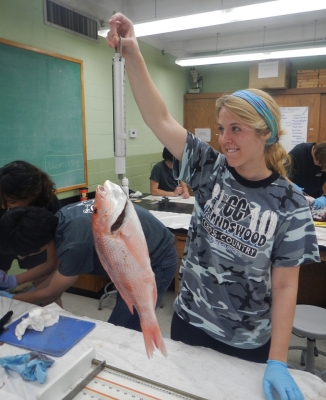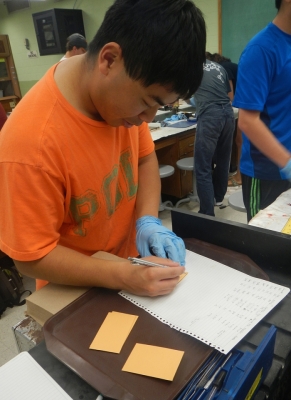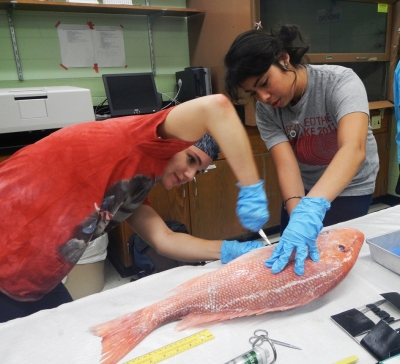 PORT ARANSAS, TX – Blood, guts and fishing get students intrigued about science during a recent field trip aboard the Scat Cat fishing vessel. Students in the University of Texas Marine Science Institute’s Semester-by-the-Sea Program got a real life experience learning about recreational fisheries this past weekend.
PORT ARANSAS, TX – Blood, guts and fishing get students intrigued about science during a recent field trip aboard the Scat Cat fishing vessel. Students in the University of Texas Marine Science Institute’s Semester-by-the-Sea Program got a real life experience learning about recreational fisheries this past weekend.
Fourteen undergraduate students from around the country came to Port Aransas to catch their limit of Red Snapper (Lutjanus campechanus) – all in the name of science. After twelve exciting hours of fishing nearly 30 miles offshore, the students took their research subjects back to the laboratory where the dirty work really began. There they dissected, inspected and cut their way through learning about many aspects of reproductive biology and fishery ecology. The students were able to use the fish to discover how ear bones (otoliths) can help determine a fish’s age and how the gonads can be used to help track spawning habitats and patterns. “Fish dissections and interacting with the recreational fishing industry is a great way to get the students to appreciate the existing catch limits as well as the gaps in what we know about fish abundance and populations that hopefully these students can help fill,” said Professor Brad Erisman. The students will continue their learning about fisheries science. Their next lesson will be understanding the effects of fishing on species and ecosystems and the strategies used to manage fisheries in the face of growing human populations and climate change.

